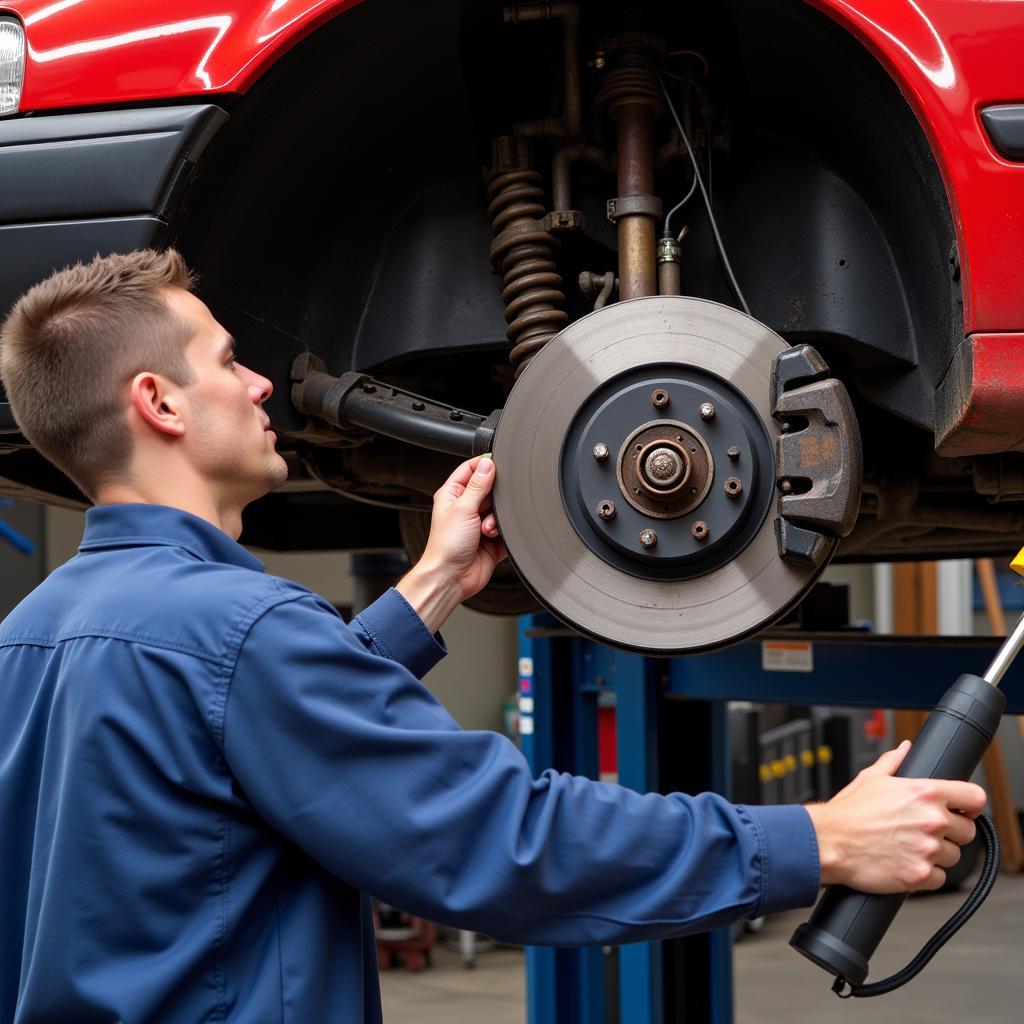The brake warning light on your Dodge Neon dashboard is a crucial safety feature, illuminating when the car’s computer detects an issue within the braking system. While it can be alarming to see this light come on, understanding its potential causes and knowing how to address them can help you get back on the road safely.
Common Causes of a Dodge Neon Brake Warning Light
Several factors can trigger the brake warning light on your Dodge Neon. Let’s delve into the most common culprits:
1. Low Brake Fluid Level
One of the most frequent reasons for the brake warning light to illuminate is low brake fluid. Your Neon’s braking system relies on hydraulic pressure, and brake fluid is the lifeblood of this system. If the fluid level drops too low, often due to a leak, the pressure needed to engage the brakes properly is compromised.
How to check:
- Locate the brake fluid reservoir under the hood of your Neon. Consult your owner’s manual for the exact location.
- Check the fluid level against the “Min” and “Max” markings on the reservoir. If the fluid is below the “Min” line, it needs to be topped up.
- If you notice a consistently low fluid level, even after refilling, it’s crucial to have your braking system inspected for leaks by a qualified mechanic.
2. Worn Brake Pads
Brake pads are designed to wear down over time with regular use. As you apply the brakes, the pads press against the brake rotors, creating friction to slow down and stop the vehicle. If your brake pads are excessively worn, a sensor embedded within the pad material triggers the brake warning light.
How to check:
- Visually inspect the brake pads through the spaces between the wheel spokes. Look for a thin metal indicator tab.
- If the indicator tab is touching the brake rotor or the pad material is less than 1/4 inch thick, it’s time to replace your brake pads.
3. Faulty Brake Light Switch
The brake light switch, located above the brake pedal, is responsible for activating your brake lights when you press the pedal. A malfunctioning brake light switch can not only cause your brake lights to malfunction but can also trigger the brake warning light.
How to check:
- Have someone observe your brake lights while you press the brake pedal. If the lights don’t illuminate, the switch might be faulty.
- A faulty brake light switch usually requires replacement, which is a relatively straightforward repair for a mechanic.
4. ABS Issue
Your Dodge Neon is equipped with an Anti-lock Braking System (ABS), designed to prevent wheel lockup during hard braking. If the ABS module detects a problem, it can illuminate the brake warning light.
How to check:
- Pay attention to how the ABS feels when you brake. If you notice unusual noises, vibrations, or a pulsating brake pedal, it could indicate an ABS problem.
- Diagnosing and repairing ABS issues typically require specialized equipment and expertise, so it’s best to consult a qualified mechanic.
What to Do When Your Dodge Neon Brake Warning Light Turns On
If your Dodge Neon’s brake warning light comes on, it’s crucial to:
- Pull over safely: Find a safe location to stop your vehicle as soon as possible.
- Check the brake fluid: Inspect the brake fluid level and top it up if necessary.
- Inspect your brake pads: If possible, visually check the condition of your brake pads.
- Avoid driving: If the light remains on, or if you suspect a serious issue, avoid driving your Neon and have it towed to a trusted mechanic for a thorough inspection.
 Dodge Neon Brake Inspection
Dodge Neon Brake Inspection
Conclusion
Addressing the brake warning light on your Dodge Neon promptly is essential for your safety and the well-being of your vehicle. While some causes, like low brake fluid, can be addressed with basic maintenance, others require the expertise of a qualified mechanic. Remember, a properly functioning braking system is paramount for safe driving. If you’re ever unsure about the cause of a brake warning light, err on the side of caution and seek professional assistance.
